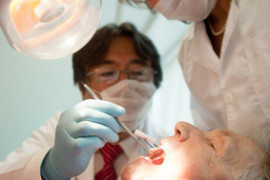Researchers at the Forsyth Institute and Northwestern University have discovered that a specific protein plays an essential role in the progression of gum disease.
They found that, in animal models, the presence of protein Transglutaminase 2 (TG2) helps notorious periodontal pathogen Porphyromonas gingivalis attach to epithelial cells.
According to the study, which was published in the Proceedings of the National Academy of Sciences journal, TG2 can be found both inside and outside cells. It is most widely known for its role in celiac disease:
Apart from its transamidating activity, TG2 is known to form tight association with fibronectin (FN), a universal component of ECM. New findings presented in our paper demonstrate that the TG2–FN complex mediates the attachment of Porphyromonas gingivalis, an oral bacterium and causative agent of periodontal disease, to the host cell.
Researchers found clusters of TG2 when P. gingivalis had attached itself to host cells; however, when TG2 was not present, P. gingivalis was not able to attach itself to the host cells. The reasons for this are not yet certain, though the study’s authors provide two possible answers:
- TG2 may help the bacteria interact with extracellular matrix proteins.
- TG2 may help the bacteria bind to integrins and fibronectin, which aid in attachment to cells.
Regardless of the underlying mechanisms, it appears that this protein (TG2) is a mitigating factor in P. gingivalis infection. As we know from previous studies, P. gingivalis is capable of invading host cells, traveling through the body, and impairing the body’s response to infection. Knowing the key component that allows this pathogen to invade host cells will surely prove significant in future research and therapies targeted at eliminating this troublemaking pathogen.
Source: Transglutaminase 2 is essential for adherence of Porphyromonas gingivalis to host cells



